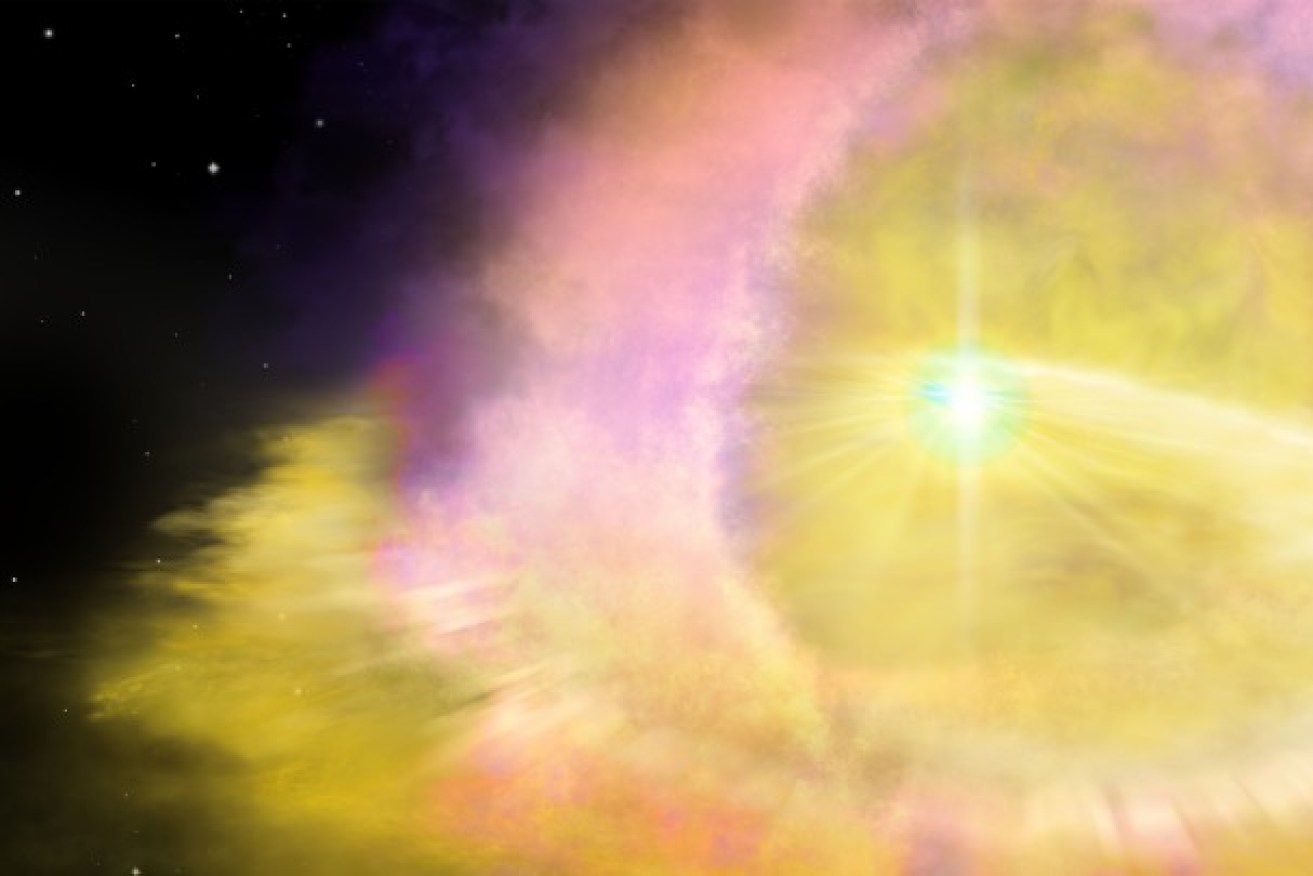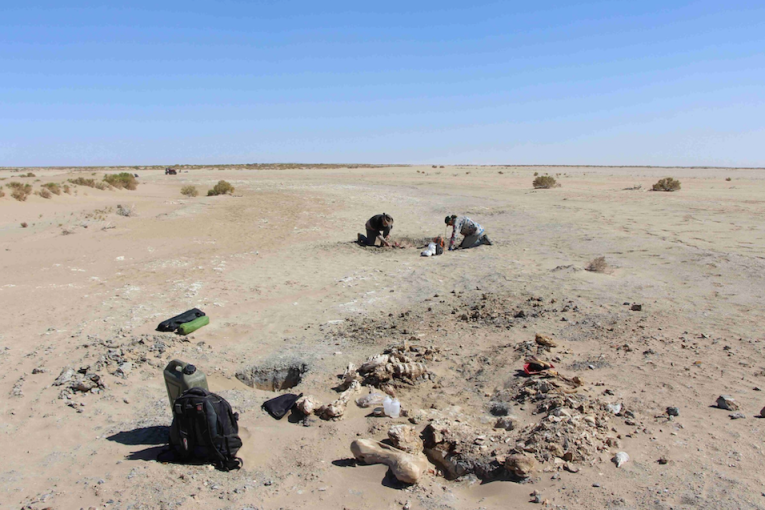Blinded by the light: Astronomers discover the brightest thing ever


An artist's impression of the supernova made from two mating stars sort of looks like the eye of God. Image: Aaron Geller
Rule No.1 as a child: Don’t stare at the sun, you’ll go blind.
So for goodness sake, if you’re anywhere in the neighbourhood of “SN2016aps” – the brightest supernova discovered so far – put those dark glasses on, otherwise your brains will probably evaporate from the sheer radiance.
After observing SN2016aps for two years, an international team of astronomers announced it was “at least twice as bright and energetic, and likely much more massive than any yet recorded”.
A supernova occurs when a massive star runs out of fuel.
As it begins to cool, the outward explosive pressure drops.
Eventually, gravity wins and the star suddenly collapses in a matter of seconds. Because the inner core collapses so violently, shock waves cause the outer part of the star to explode.
Except the SN2016aps event may involve two stars
The astronomers believe the supernova could be an example of an extremely rare “pulsational pair-instability” supernova, possibly formed from two massive stars that merged before the explosion.
According to a statement from the University of Birmingham, such an event so far only exists in theory and has never been confirmed through astronomical observations.
Dr Matt Nicholl, of the School of Physics and Astronomy and the Institute of Gravitational Wave Astronomy at the University of Birmingham, is lead author of the study published in Nature Astronomy.
He said: “We can measure supernovae using two scales – the total energy of the explosion, and the amount of that energy that is emitted as observable light, or radiation.
“In a typical supernova, the radiation is less than one per cent of the total energy. But in SN2016aps, we found the radiation was five times the explosion energy of a normal-sized supernova.
“This is the most light we have ever seen emitted by a supernova.”
So bright, it put the surrounding galaxy in the shade
The supernova was first spotted in February 2016, using Hawaii’s Panoramic Survey Telescope and Rapid Response System observatory.
It was discovered in a low-mass cluster of stars reportedly 3.6 billion light years from Earth.
The scientists had to wait for the event to burn down to one per cent of its peak brightness before they were able to study the surrounding area.
“While many supernovae are discovered every night, most are in massive galaxies,” said Dr Peter Blanchard, from Northwestern University and a co-author on the study.
“This one immediately stood out for further observations because it seemed to be in the middle of nowhere.
“We weren’t able to see the galaxy where this star was born until after the supernova light had faded.”
Using these measurements, they calculated the mass of the supernova was between 50 to 100 times greater than our sun (solar masses).
Typically supernovae have masses of between 8 and 15 solar masses.
“Stars with extremely large mass undergo violent pulsations before they die, shaking off a giant gas shell,” Dr Nicholl said.
“This can be powered by a process called the pair instability, which has been a topic of speculation for physicists for the last 50 years.
“If the supernova gets the timing right, it can catch up to this shell and release a huge amount of energy in the collision. We think this is one of the most compelling candidates for this process yet observed, and probably the most massive.”
What puzzled the scientists most: The gas they detected was mostly hydrogen – but such a massive star would usually have lost all of its hydrogen via stellar winds long before it started pulsating, said Dr Nicholl.
“One explanation is that two slightly less massive stars of around, say 60 solar masses, had merged before the explosion,” he said.
“The lower mass stars hold onto their hydrogen for longer, while their combined mass is high enough to trigger the pair instability.”








